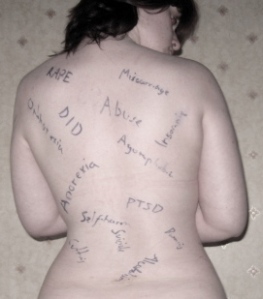[tweetmeme source=”Life_With_DID”]
Had a few conversaions recsetly about people faking mental illnesses, specifially people faking DID. Now whenever these topics come up the first thing I think is “why would anyone fake this?” and the most common reply is “attention” or “be look cool”. Now ok the attention one I sort of get, but to look cool? really? How exactly is essentially saying “so ye, I was raped and abused as in infant and so my mind sort of split as a defence mechanism, so now I don’t remember large chunks of my life, I get awful headaches, doctors don’t trust me with medication, I can’t hold down a job and I get confused by really simple stuff” cool? Maybe I am just out of the loop and misunderstand the meaning of the word “cool” but to me the fact that a person was ABUSED is not a “cool” thing and pretending that you were abused just so that you have something to say when conersations start to die is also not a “cool” thing.
I don’t know, I just don’t get it… living with this is HELL 90% of the time. The constant noise, the never knowing what day it is, the never being able to plan anything as you’ve no idea if you are going to be functional let alone “you” on any given day, the “waking up” in unknown places and haing to go into a shop to ask “excuse me, thais may sound like an odd question, ut what city is this?”, not to mention the flashbacks, the nightmares, the insomnia, the “flashes” that make nosense, the fact that no therapist will touch you with a barge pole so you are constantly being bumped from one psych to another, etc…
Just some thoughts… Also if anyone I’ve been talking about this with reads this: none of this is a critism or anything like that, it’s just basically me thinking out loud and wanting to get some peoples opinions in order to help me to understand.


















